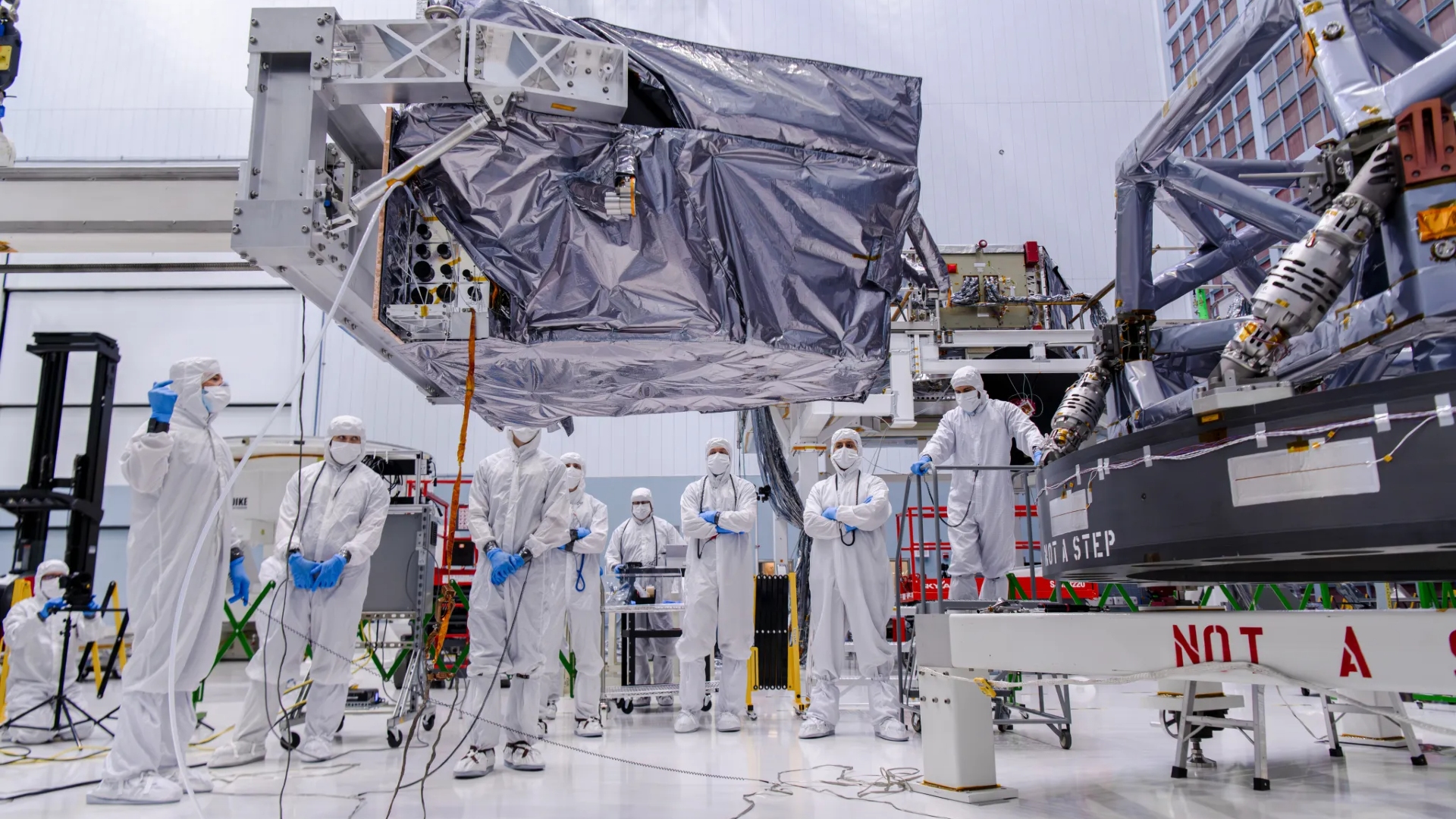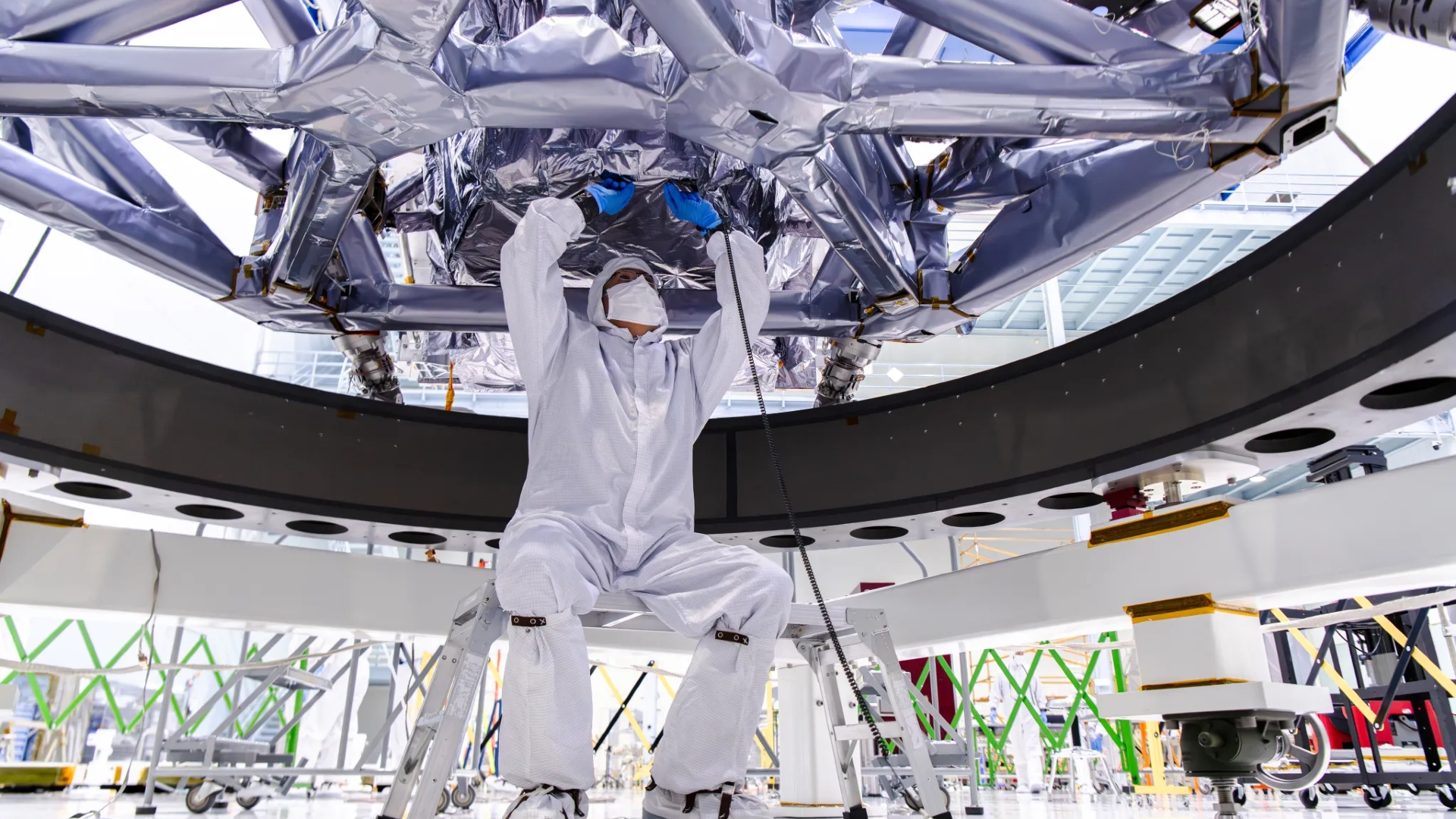In a clear room at NASA’s Jet Propulsion Laboratory in Southern California, scientists have efficiently built-in an important part onto the Roman House Telescope. This machine, often called the Roman Coronagraph Instrument, is designed to dam starlight, enabling scientists to detect the faint mild from planets past our photo voltaic system.
This achievement marks a major milestone for NASA’s Nancy Grace Roman House Telescope, a next-generation area observatory that may launch round Could 2027. With a discipline of view a minimum of 100 instances bigger than that of the Hubble House Telescope, Roman might be used to research scientific mysteries associated to darkish vitality, exoplanets, and infrared astrophysics.
It is going to achieve this utilizing its one science instrument referred to as the Broad Area Instrument, and the Roman Coronagraph Instrument, which is a know-how demonstration—a stepping stone for future area missions, just like the proposed Liveable Worlds Observatory, which might be the primary telescope designed particularly to seek for indicators of life on exoplanets.
“With a purpose to get from the place we’re to the place we wish to be, we want the Roman Coronagraph to exhibit this know-how,” mentioned Rob Zellem, Roman House Telescope deputy undertaking scientist for communications at NASA Goddard. “We’ll be making use of these classes discovered to the subsequent technology of NASA flagship missions that might be explicitly designed to search for Earth-like planets.”
The coronagraph, which is roughly the dimensions of a child grand piano, is a complicated system composed of masks, prisms, detectors, and self-flexing mirrors that work collectively to dam the glare from distant stars, permitting scientists to detect the planets orbiting them.
At present, exoplanets are noticed via oblique strategies, significantly utilizing a way referred to as transiting. This methodology entails measuring dips within the mild of a distant star that happen when an exoplanet passes in entrance of it. These dips present precious insights, together with details about the planet’s atmospheric composition, which is necessary in figuring out habitability. They could even reveal the presence of gases that might point out the existence of life.
Whereas this methodology has supplied extremely precious insights, it additionally has its limitations. For one, solely a small fraction of planets might be noticed this manner, as transits happen for only a temporary interval throughout a planet’s whole orbital cycle, limiting the quantity of knowledge that may be gathered.

For a transit to be detected, the orbital airplane should be almost edge-on to the observer, a situation that applies to solely a small minority of distant planets. Consequently, many planets will stay undetected via photometry. Moreover, the length of a planet’s transit represents solely a tiny fraction of its full orbital interval.
Though applied sciences for acquiring direct pictures of exoplanets are advancing, they’ve primarily targeted on big planets that proceed to emit mild from their current formation on account of their excessive temperatures, making them simpler for telescopes to establish. One notable instance is a sequence of pictures capturing 4 exoplanets orbiting the star HR 8799, produced by astronomers utilizing knowledge from Hawaii’s Keck Observatory.

Nevertheless, scientists are turning to coronagraphs as the subsequent development in planet-seeking know-how. The Roman Coronagraph Instrument goals to showcase how this direct imaging know-how, which has confirmed efficient with ground-based telescopes, can obtain even higher success in area.
“The Roman Coronagraph is designed to detect planets 100 million instances fainter than their stars, or 100 to 1,000 instances higher than current space-based coronagraphs,” in line with NASA’s Jet Propulsion Laboratory.
The coronagraph was efficiently connected to the telescope’s Instrument Provider, a big grid-like construction positioned between the area telescope’s main mirror and the spacecraft bus, which is able to transport the telescope into orbit.
“You’ll be able to consider [the Instrument Carrier] because the skeleton of the observatory, what every little thing interfaces to,” mentioned Brandon Creager, lead mechanical engineer for the Roman Coronagraph at JPL. The Instrument Provider will maintain each the coronagraph and Roman’s Broad Area Instrument, the mission’s main science instrument, which is ready to be built-in later this 12 months.
Engineers will now carry out completely different checks and checks earlier than transferring ahead with the mixing of the Broad Area Instrument and at last, the telescope itself.
“It is actually rewarding to look at these groups come collectively and construct up the Roman observatory. That is the results of lots of groups, lengthy hours, laborious work, sweat, and tears,” mentioned Liz Daly, the built-in payload meeting integration and take a look at lead for Roman at Goddard.





